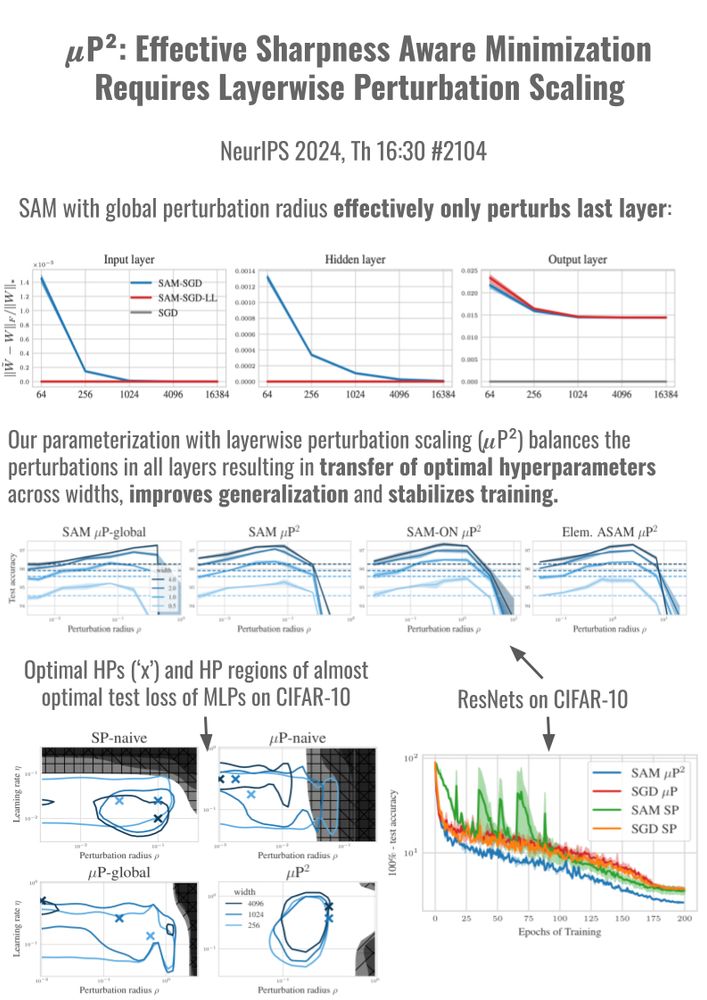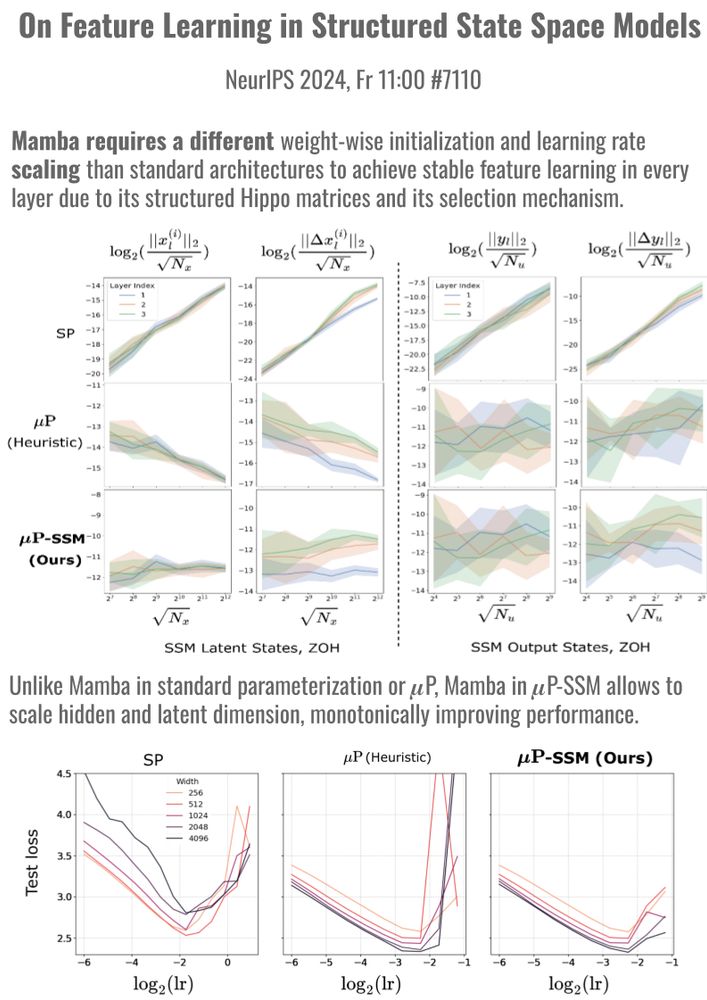mohawastaken.github.io
Thrilled to present 2 papers at #NeurIPS 🎉 that study width-scaling in Sharpness Aware Minimization (SAM) (Th 16:30, #2104) and in Mamba (Fr 11, #7110). Our scaling rules stabilize training and transfer optimal hyperparams across scales.
🧵 1/10


Thrilled to present 2 papers at #NeurIPS 🎉 that study width-scaling in Sharpness Aware Minimization (SAM) (Th 16:30, #2104) and in Mamba (Fr 11, #7110). Our scaling rules stabilize training and transfer optimal hyperparams across scales.
🧵 1/10

